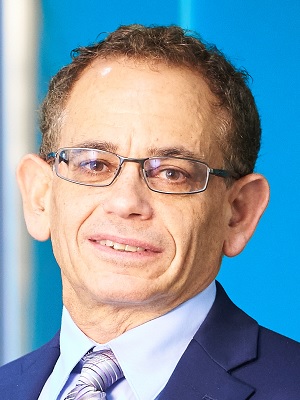Privacy, Security, and Trust 2017 - August 28-30, 2017

Privacy, Security, and Trust 2017 - August 28-30, 2017

Privacy, Security, and Trust 2017 - August 28-30, 2017

 |
Bio: Jeremy ClarkJeremy Clark is an assistant professor at the Concordia Institute for Information Systems Engineering. He obtained his PhD from the University of Waterloo, where his dissertation, awarded Waterloo’s Gold Medal, was on designing and deploying secure voting systems that provide a provably correct tally, and included Scantegrity -- the first use of an end-to-end verifiable system in a public sector election. He recently became interested in Bitcoin and has contributed to one of the first academic papers in the area, several research projects, and a textbook. Beyond research, he has worked with several municipalities on voting technology and testified to the Canadian Senate on Bitcoin. Abstract:Bitcoin has emerged as the most successful cryptographic currency in history. Within two years of its quiet launch in 2009, Bitcoin grew to comprise billions of dollars of economic value despite only cursory analysis of the system’s design. Since then, researchers have identified hidden-but-important properties of the system, developers and entrepreneurs have proposed promising alternatives and extensions, and major corporations have deployed technologies based on Bitcoin’s data-structure for distributed ledgers (the blockchain). In this talk, we trace Bitcoin’s origins and provide an overview of how it, and its components, are being applied to digital currency and other disintermediated services. |
 |
Bio: Aniket KateAniket Kate is an Assistant Professor in the computer science department at Purdue University. Before joining Purdue in 2015, he was a faculty member and an independent research group leader at Saarland University in Germany, where he was heading the Cryptographic Systems Research Group. He completed his postdoctoral fellowship at Max Planck Institute for Software Systems (MPI-SWS), Germany in 2012, and received his PhD from the University of Waterloo, Canada in 2010. His research integrates applied cryptography, distributed computing and statistics towards designing, implementing and analyzing privacy and transparency enhancing technologies. Abstract:The hope that cryptography and decentralization together might ensure robust user privacy was among the strongest drivers of early success of Bitcoin's blockchain technology. A desire for privacy still permeates the growing blockchain user base today. Nevertheless, due to the inherent public nature of most blockchain ledgers, users' privacy is severely restricted, and a few deanonymization attacks have been reported so far. Several privacy-enhancing technologies have been proposed to solve this issues, and a few have been implemented; however, some important challenges still remain to be resolved. In this talk, we discuss privacy challenges, promising solutions, and unresolved privacy issues with the blockchain technology. In particular, we study prominent privacy attacks on Bitcoin and other blockchain systems, analyze the existing privacy solution ranging from Coinjoin to Zerocash, and finally describe important unresolved challenges towards publishing and retrieving transactions privately. |
 |
Bio: David KravitzDr. David W. Kravitz is Vice President of Crypto Systems Research and heads the blockchain team at DarkMatter. His 35-year experience spans cryptographic- algorithms, protocols and systems design and evaluation, as applied to a wide range of areas, including voice- and data- critical infrastructure, digital rights management, payments, smart grid, Internet of Things, and high-value assets transfer. He began his career at the National Security Agency, where as Senior Technical Advisor he “combined his exceptional skills in protocol and algorithm design with his evaluation capabilities to profoundly enhance the security posture of communications,” as stated in the Certificate of Achievement he was awarded by the Director of the NSA. He has also held positions such as Senior Member of Technical Staff at Sandia National Laboratories, VP at CertCo, Chief Scientist at Digital Video Express and at Wave Systems Corp., Fellow of Technical Staff at Motorola, Principal Member of Technical Staff at BlackBerry, and Research Staff Member at IBM. He was the principal architect of the Membership Services identity management framework of Hyperledger Fabric, and invented DSA, the elliptic curve variant of which underlies Bitcoin and Ethereum. He holds a Ph.D. and Masters in Electrical Engineering - Systems from University of Southern California, a Masters in Mathematical Sciences from Johns Hopkins University, and a Bachelors in Mathematics from Rutgers University. Abstract:Making Connections: Blockchain for Smart City FinTech and M2M Applications. When harnessed properly, blockchain greatly facilitates reconciliation of event history among multiple entities. Blockchain, as a distributed, immutable and ordered log of events, enables users and devices to perform transactions, and to be tracked relative to time and location. Such tracking must be managed judiciously in order to balance privacy concerns against the benefits of enabling users to point to specific behavioral patterns. Mobile phones can be used as endpoint devices, or as a natural hub for resource-constrained IoT devices as a geo-locator, communications conduit, trusted execution environment, analytics processor, and/or data storage medium. The major missing link of the well-known Bitcoin blockchain is the element of “permissioning,” i.e., a privacy-preserving, traffic-analysis- resistant methodology that leverages external trust relationships in order to establish an auditable authentication and authorization framework for identity and attribute management. Know your customer (KYC for fintech), know your machine (KYM for M2M), and effective integration of on- and off- chain operations must be accommodated. IoT devices suitably provisioned with identity management trust anchors have the potential to securely and efficiently transact over permissioned blockchains for smart city applications. But meaningfully importing externally established identities, attributes, resource entitlements and reputation metrics necessitates the introduction of a carefully constructed Public Key Infrastructure translation feature. In this light, one-time-use Transaction Certificates can be incorporated into blockchain transactions to replace the raw/uncertified public keys used in Bitcoin addresses. The system inherits the desired transaction unlinkability property from the US Department of Transportation- piloted Security Credential Management System PoC for V2V/V2X communications. |
 |
Bio: Dinesh ShahAs Program Manager E-money and Fintech Research Dinesh leads the technology aspect of the Bank of Canada’s research agenda in those areas. This encompasses the analysis of emerging and potentially disruptive technologies with wide applications to the financial system, and research into conceptual architectures for central bank issued e-money. This analysis supports economic and financial system research into the implications of such technologies to the core mandates of the Bank. Dinesh first joined the Bank of Canada in 2009 as an Enterprise Architect. Before joining the Bank Dinesh has been a co-founder and architect at various start-ups. He spent 8 years as a developer of various fixed-income trading and risk management systems at financial institutions in London. In addition, he provided expertise on the application of leading edge technologies to securities trading and clearing firms. Dinesh holds a BSc (hons) in Physics with Computing from The University of Kent in the U.K. Abstract:The Bank of Canada has undertaken two research initiatives that include investigation of distributed ledger technology (DLT) and attendant issues such as privacy, security, resilience and systemic risk. We will describe our work in the areas of central bank digital currencies (CBDC) and fintech in the context of the Bank's macroeconomic responsibilities. More specifically we discuss the purpose, method and findings of project Jasper - a collaborative proof-of-concept that uses DLT for large-value interbank payments. While the economic research as to the rational and consequences of a retail CBDC continues, the Bank is also investigating the technology options of such an instrument. We will discuss our preliminary thoughts on the technology options and the issues we see. |